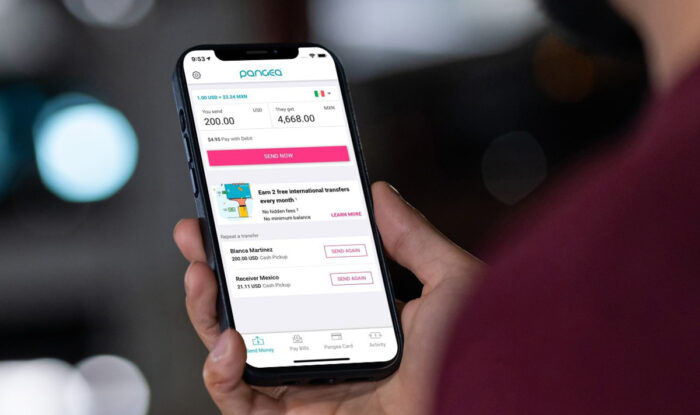If you’ve sent money to a friend or loved one in the past, your go-to money transfer method might be a direct peer-to-peer deposit into a bank account. But, do you know the safe, secure options available to you for sending funds to someone that doesn’t bank traditionally?
Though the process of sending funds to a loved one without an account might seem overwhelming at first, rest assured that both traditional and modern day money transfer methods allow you to send funds safely whether your receiver has a bank account or not. In fact, today’s technologies have simplified the process of international money transfer tremendously! If your friend or family member needs your financial support, but doesn’t have a bank account, read on to discover the multiple ways you can ensure your hard earned money reaches them safely.
Sending Money Through a Physical Instrument
Money orders
One of the most conventional ways to send money to a friend or loved one who does not have a bank account is through a money order. A money order is a pre-paid paper instrument directing funds to a payee. This form of payment offers the security of a check, without necessitating a checking account.
Money orders can be acquired through post offices, gas stations, pharmacies, and many retailers including Walmart. A money order can be issued in any increment up to $1,000 per instrument for domestic transfers and $700 for international transfers. Payors must provide the issuing financial institution or authorized retailer with their name, the intended payee’s name, and the exact amount of money to be delivered. If funds to be transferred should exceed the $1,000 domestic limit, or the $700 international limit, payors must acquire more than one money order, and must go through the process of filling out the requisite paperwork for each instrument issued. Payors have to pay a nominal fee, usually under $3 in the U.S., for each money order they purchase.
Recipients of money orders can retrieve their cash at participating banks, credit unions, and even some retailers. Most money order processors require the payee to show a photo ID and sign the instrument before cash is issued. Typically, the bank or retailer will charge the payee a nominal fee for processing a money order.
Of course, because money orders are a physical form of currency, payors must visit a retailer in person to have the instruments issued, and payees must appear in person to have them redeemed. If a recipient is abroad, the time it takes to transfer funds is entirely dependent on how the money order is sent to them. Like a check, money orders can be mailed to a recipient, but transfer time varies based on the method of delivery chosen. Once the recipient has their money order in hand, they can pay their processing fee and redeem the money order for cash at any time the retailer of their choice is open for business.
Prepaid debit cards
Another way to send or receive money without a bank account is through a prepaid debit card. These cards work like debit cards, without requiring a bank account for use. The sender loads money onto the card via cash, debit or credit card, and transfers the card to their intended recipient for use.
Prepaid debit cards can generally be picked up from major retailers, convenience stores, gas stations, and money transfer hubs like Western Union. They can be purchased either in person or online, but online purchases do require a valid credit or debit card.
Many prepaid debit cards will typically debit a nominal fee for use from the balance of the card. It’s important to check in with the financial institution that issued the card to get a clear picture on the total sum of fees and limitations associated with using a pre-card.
Like money orders, recipients must have their pre-paid debit card on hand to make use of it.
Sending Funds Through a Money Transfer Service
Western Union and MoneyGram
Western Union
Western Union is one of the U.S.’ oldest money transfer services, and allows users to send money in-person, online and over the phone. Domestic and international recipients without bank accounts can visit an agent location near them to pick up their funds in either cash or through a prepaid debit card.
When picking up their transferred funds, recipients must show Western Union agents a government-issued ID and the tracking number provided by the sender. If they prefer to pick up their funds via a prepaid card, receivers can call the phone number on the back of their card to check their available balance.
MoneyGram
MoneyGram is another traditional money transfer service that offers recipients in-person cash pick up globally. According to their website, “cash can be picked up at any MoneyGram agent location. The money is typically ready for pick up in as little as 10 minutes after the transfer is submitted, subject to agent operating hours, and compliance with regulatory requirements.”
Walmart2Walmart
Walmart offers a cash transfer program called Walmart2Walmart. It allows for money transfers between store locations, through both a mobile app or from any of 3,000+ Walmart stores in the U.S. and Puerto Rico.
To send money in-person, senders must go to the money services center at their nearest Walmart. Senders must present a photo ID, choose the amount of funds to be transferred, and select a Walmart store near their recipient’s location. Recipients can pick up their money at that designated Walmart location within ten minutes.
There are fees associated with Walmart2Walmart’s transfer services. While there is no cost to the recipient, fees for the sender start at $4 per transfer. Additionally, senders are limited to transfer caps of $2,500 per day and $6,000 per month.
Money Transfer Apps
Sending money to a friend or loved one that does not have a bank account is easier than ever when using a money transfer app. With many apps on the market to choose from today, finding the right app for you is important. Not all apps are created equal, and only specific money transfer apps are able to support international money transfers.
When choosing a money transfer app, there are a number of considerations to keep in mind. Here are a few:
- International transfer: When sending money to a loved one abroad, the app should support international transfers to the country of choice.
- Fees: The app’s fees per transfer should be cost-effective.
- Speed: The app should offer transfer speeds that meet a sender’s needs. Speed of transfer can vary from app to app.
- Scheduling: If sending money in set time intervals is of value, the app should offer automatic transfer capabilities.
- Cash Pick Up: If an intended recipient does not have a bank account, the app should offer cash pick up options in the recipient’s country of choice. This is the most important consideration if a recipient does not have a bank account or debit card that is able to receive transfers.
Recipients without a bank account can leverage cash pick up options through their app of choice’s partner banks and retailers throughout the world. Cash pick up locations and fees vary by country.
Cash pick up is especially convenient when using the Pangea Money Transfer app. When sending funds through the Pangea app, a user can select the branch of the retailer of their choosing from Pangea’s list of partners. Receivers will need to show the transfer code and an official ID at that designated pick up location. The transfer code will be displayed in the transaction receipt. Receivers will also get a text message (SMS) with the transfer code if a mobile number was entered in the receiver profile.
Pangea is a top-rated app on the Apple and Google Play stores, and has bank and retail partnerships across Latin America and Asia. Offering a low-fixed rate on all transactions and incredibly fast transfer speeds, users can ensure their money transfers to a loved one are cost-effective, secure and easier than ever with Pangea!





